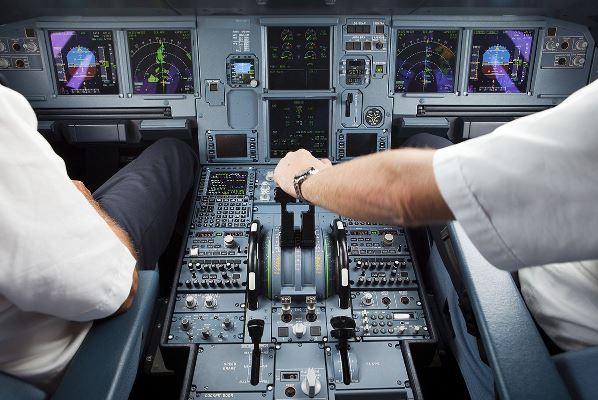Training in Manual Handling & Boom Lifts: The Basic Foundation of Occupational Safety
Manual Handling Training is an important factor in workplace health and safety, focusing on minimizing the prospects of an accident and improving efficiency. Forklift Quality Training (FQT) is a Registered Training Organisation (RTO 45625) that has worked for over 35 years; we offer our clients high-quality training and assessment services. Our training products include customized training for all individuals and corporations to provide you with essential practical knowledge to execute your work responsively and effectively without risk.
Understanding Manual Handling Training:
Lifting, carrying, pushing, pulling, or moving anything with physical force is known as manual handling. Inefficient handling causes musculoskeletal disorders and MSDs among the top five notifiable workplace injuries and diseases in the UK. Manual Handling Training focuses on how workers should carry, push, or pull loads to reduce cases of injuries in workplaces.
Key Features of Manual Handling Training:
- Prevention of Injuries: Employers are trained to pick and carry items correctly to prevent work-related strains, sprains, and other injuries.
- Increased Productivity: Handling tasks ensures that workers finish their work within the shortest time possible.
- Compliance with Regulations: In Australia, the nation’s workplace health and safety laws, for instance, proclaim that employers must ensure their employees are trained in safe manual handling.
- Cost Reduction: Organizations avoid compensation costs, medical bills, and productivity loss by reducing injuries.
What do I need to know about Manual Handling Training?
Similarly, at FQT, our Manual Handling Training programs incorporate all of the above in a package that will suit your needs. The key components include:
- Risk Assessment: Pros and cons of manual handling and assessing hazards likely to be encountered at the workplace.
- Safe Techniques: Correct way of lifting, carrying, and moving objects to help prevent spines and joints.
- Use of Equipment: Training on equipment such as trolleys and hoists to help with manual handling.
- Ergonomic Practices: Providing accommodation of particular physical requirements to adapt workstations and workflows.
- Practical Exercises: Further practical training sessions will strengthen the material and make the learner confident.
Why You Should Choose Forklift Quality Training for Manual Handling Training:
- Proven Expertise: FQT has experience of more than thirty years having trained close to thousands of personnel mainly in South Australia and the Northern Territory.
- Customized Training Solutions: Our programs for learners and corporations guarantee customizable learning.
- Convenience: We conduct training at our plant in Adelaide, South Australia, and we have mobile services across Australia.
- High Standards: AMI is a registered training organization, and we ensure that all our courses meet quality and compliance requirements.
Understanding Boom Lift Training:
Besides, FQT conducts manual handling training for its employees and offers Boom lift Training since the program is very important for employees working in a raised workplace. This training enables participants to have the ability and knowledge to use boom lifts, which is a high-risk equipment operation.
Major Indicators of Boom Lift Training:
- Understanding Equipment
- A guide to different types of boom lifts.
- Basic procedures before operating the equipment.
- Safety Protocols
- Risk assessment and mitigations of risks.
Benefits of Boom Lift Training:
- Enhanced Safety: Reduces the risk of top-related work accidents.
- Improved Confidence: It gives the operators a professional approach to managing equipment within the company.
- Career Opportunities: Licensing high-risk work makes handling businesses requiring boom lift operators preferable.
- Business Efficiency: Operators also ensure that tasks are done safely and within the appropriate time.
Why Choose FQT for Boom Lift Training?
- Comprehensive Programs: Comprehensively ranging from the theory of boom lift usage and actual practices.
- Experienced Trainers: Skilled and knowledgeable people in different industries.
- National Reach: Training is available in SA and NT, with services available onsite across Australia.
Conclusion:
Boom Lift Training and Manual Handling Training are two important pieces of training for making the workplace effective and safe. FQT stands for Forklift Quality Training, and our company offers numerous training services to fulfill everyone’s requirements and needs. If you are looking for an improvement in manual handling or knowledge about operating boom lifts, FQT has everything you need.
FAQs:
Q1. What is Manual Handling Training, and why is it necessary?
Manual Handling Training involves helping employees understand acceptable ways of lifting or moving objects to avoid strain or harm and improve productivity at the workplace.
Q2. Who, therefore, should take Manual Handling Training?
This training is important for all employees exposed to lifting, carrying, or moving loads at the workplace to avoid further complications or violation of legal requirements.
Q3. What is the content of Boom Lift Training?
The training covered in Boom Lift Training includes equipment operation, safety measures, hazards, and OSHA safety standards.
Q4. How are the durations of the training determined?
Depending on the course’s set time and the extra time a student may take, it may take longer or shorter. Please consult FQT for more information.
Q5. Where is FQT located?
FQT located in South Australia and Northern Territory of Australia.



